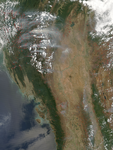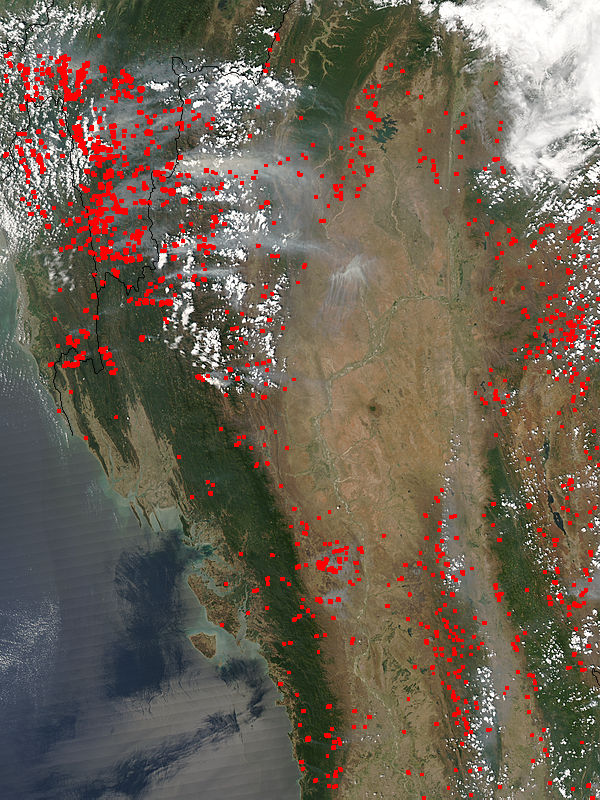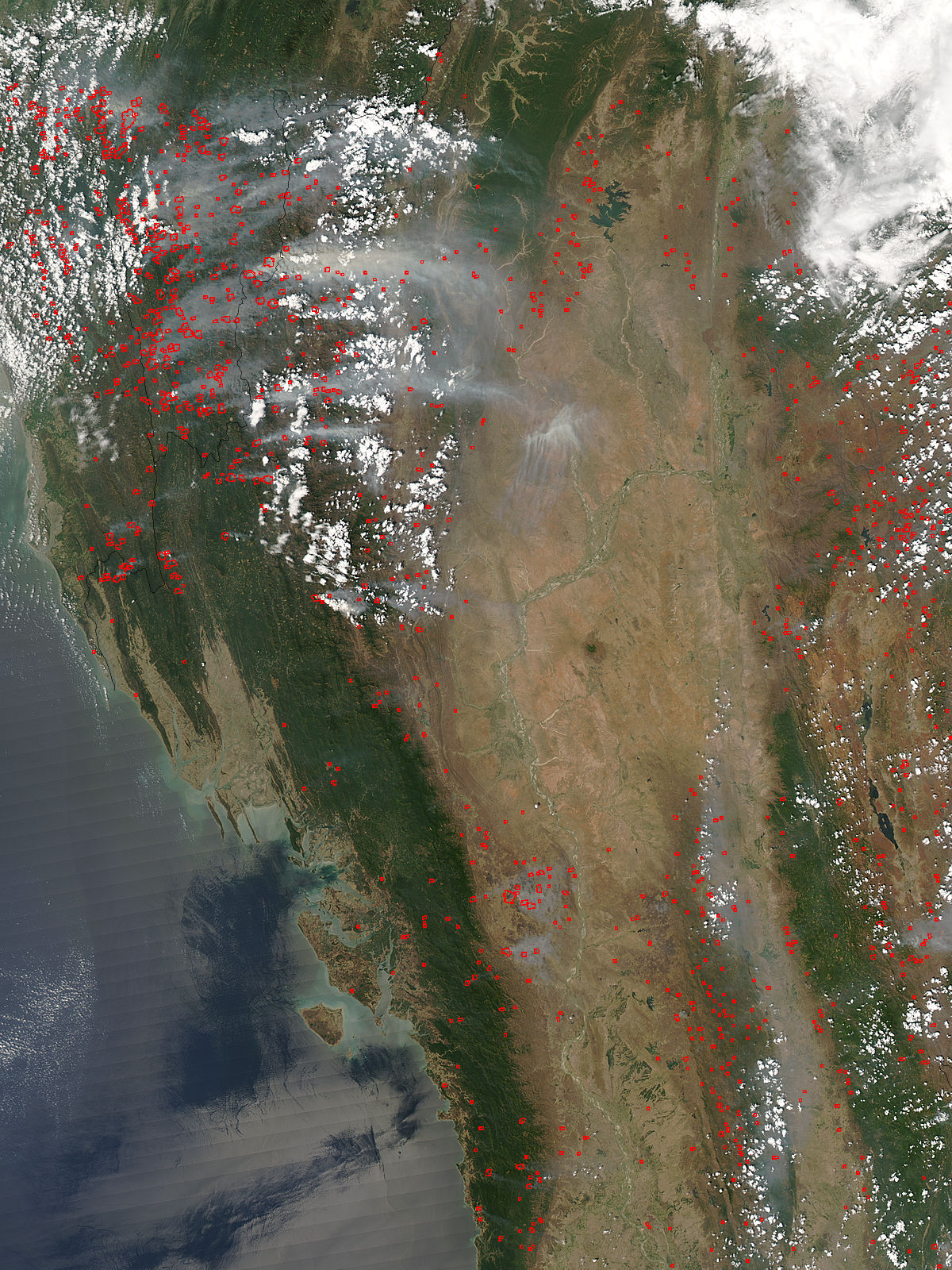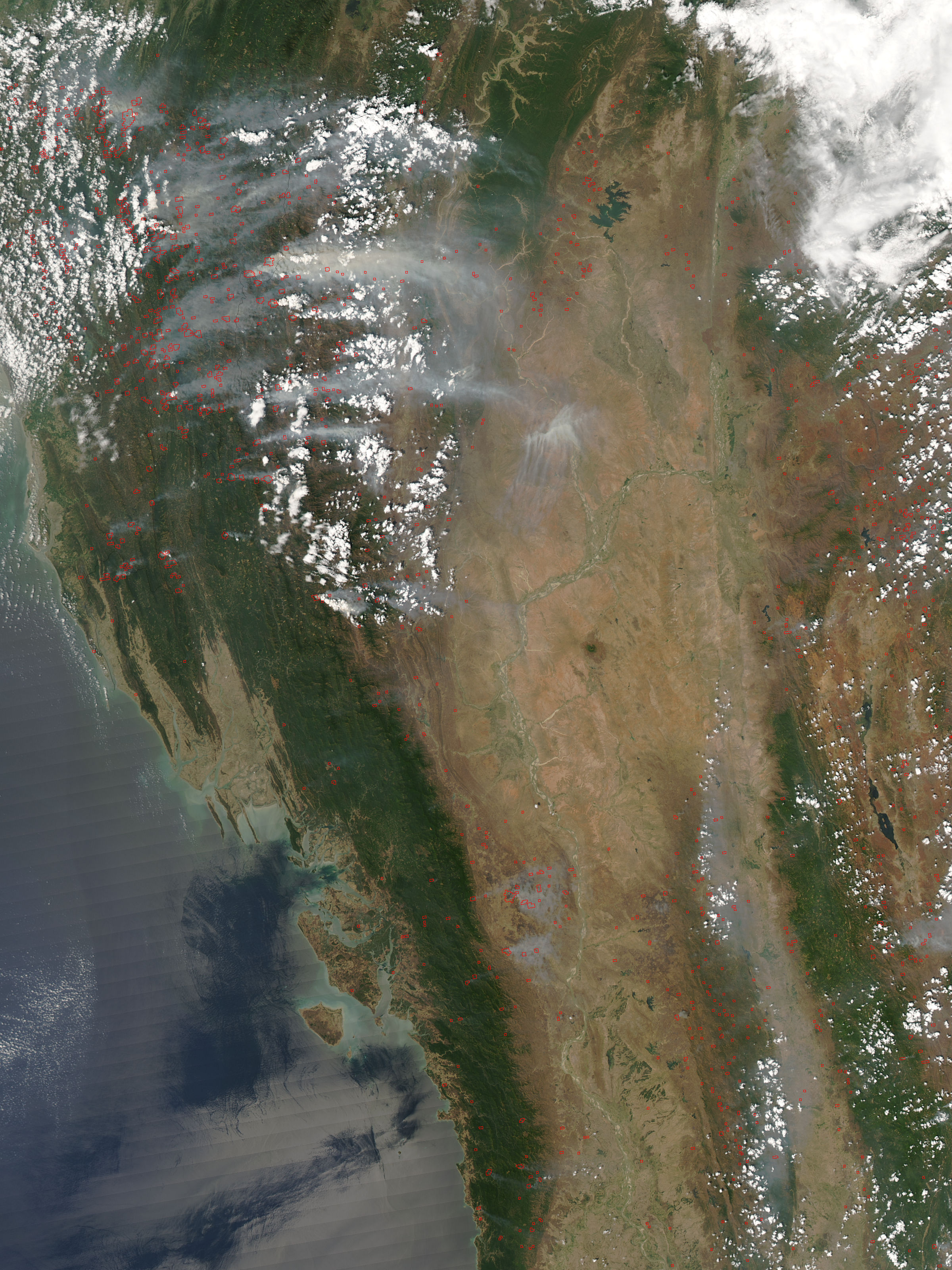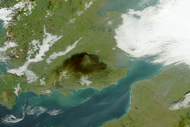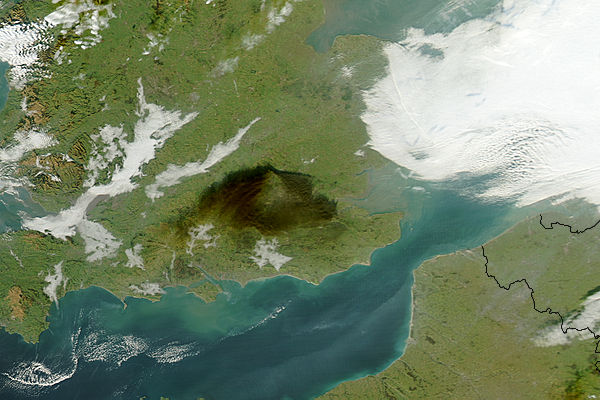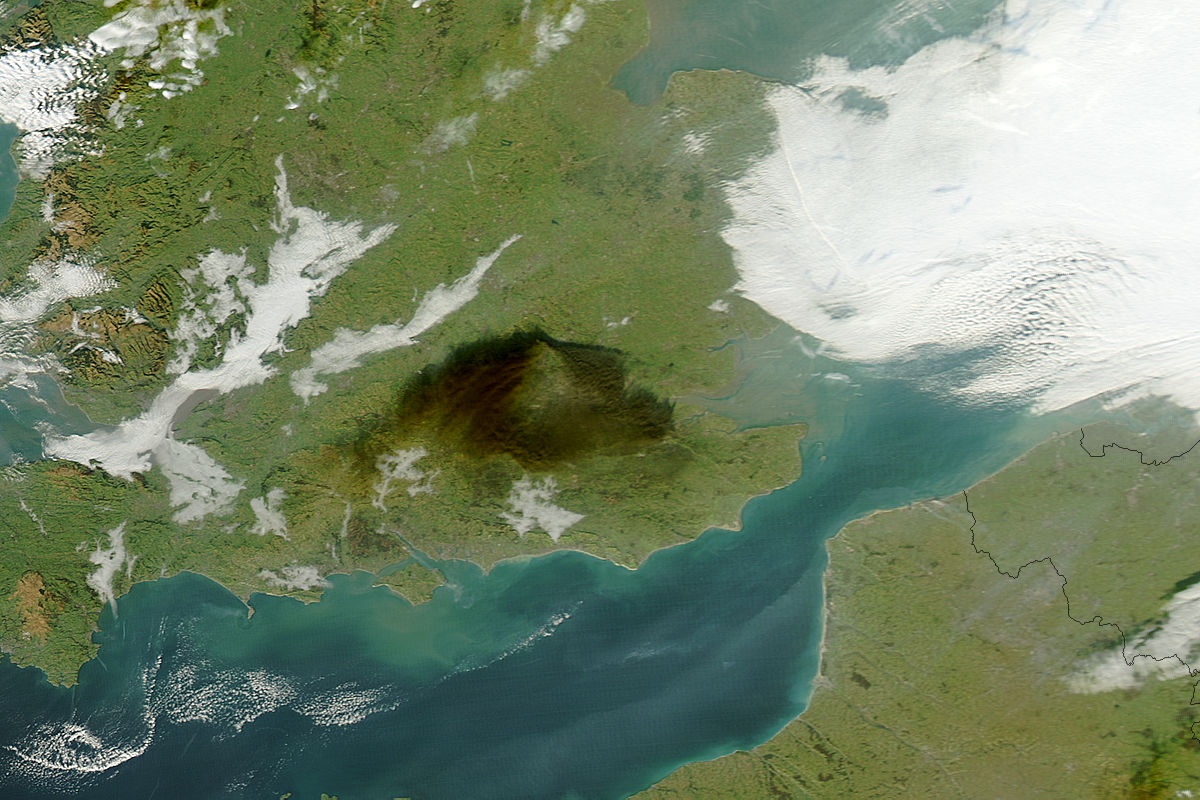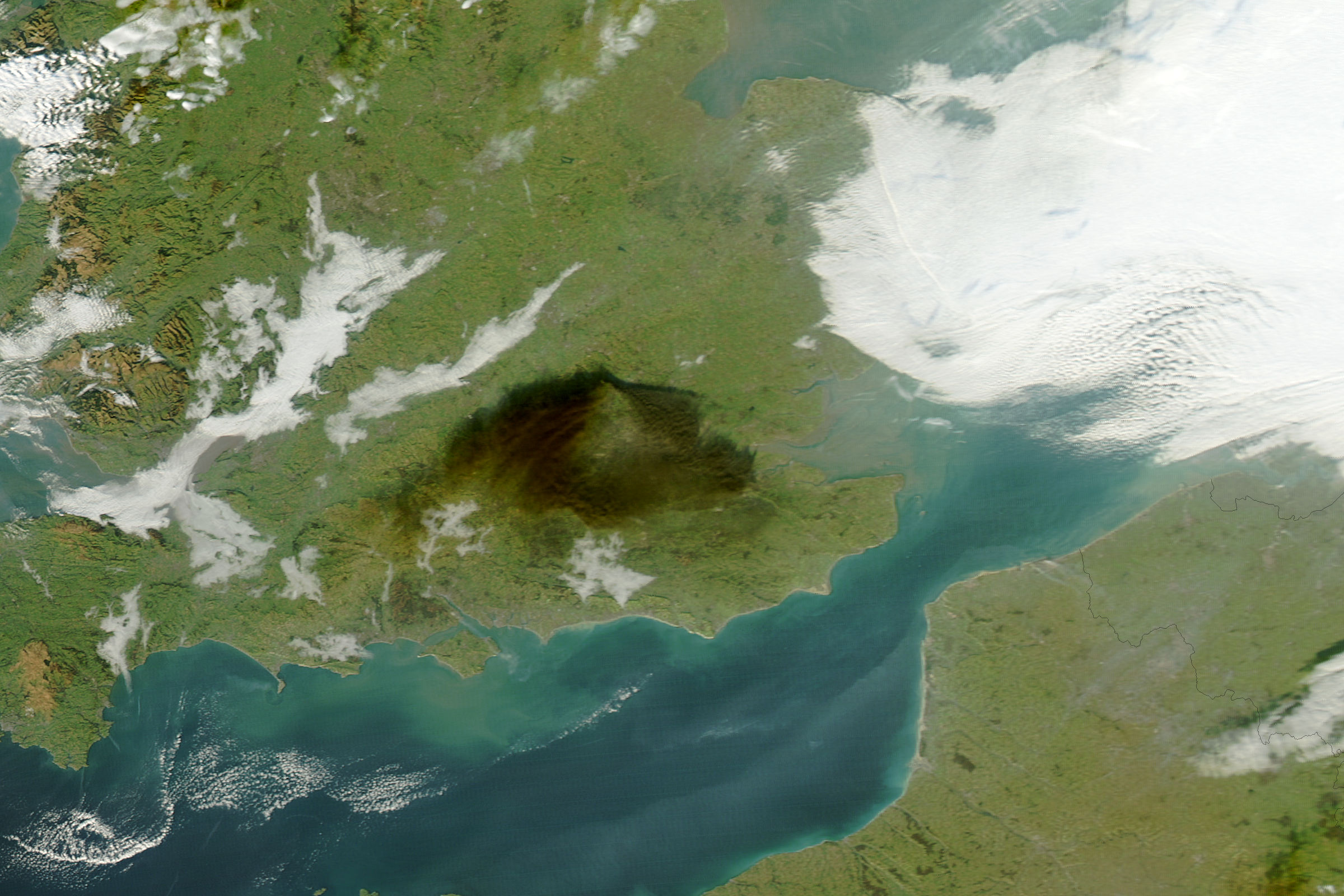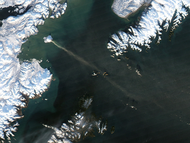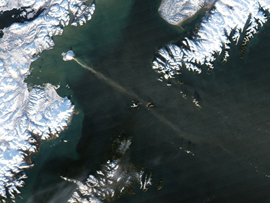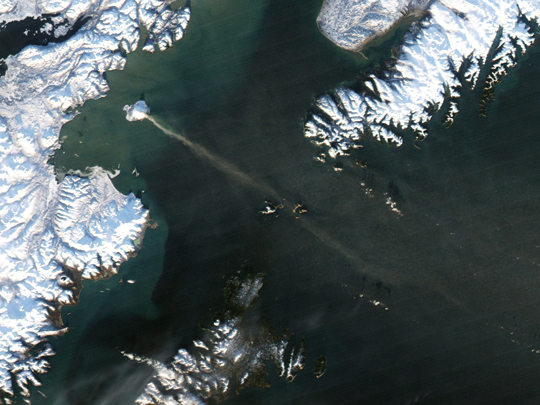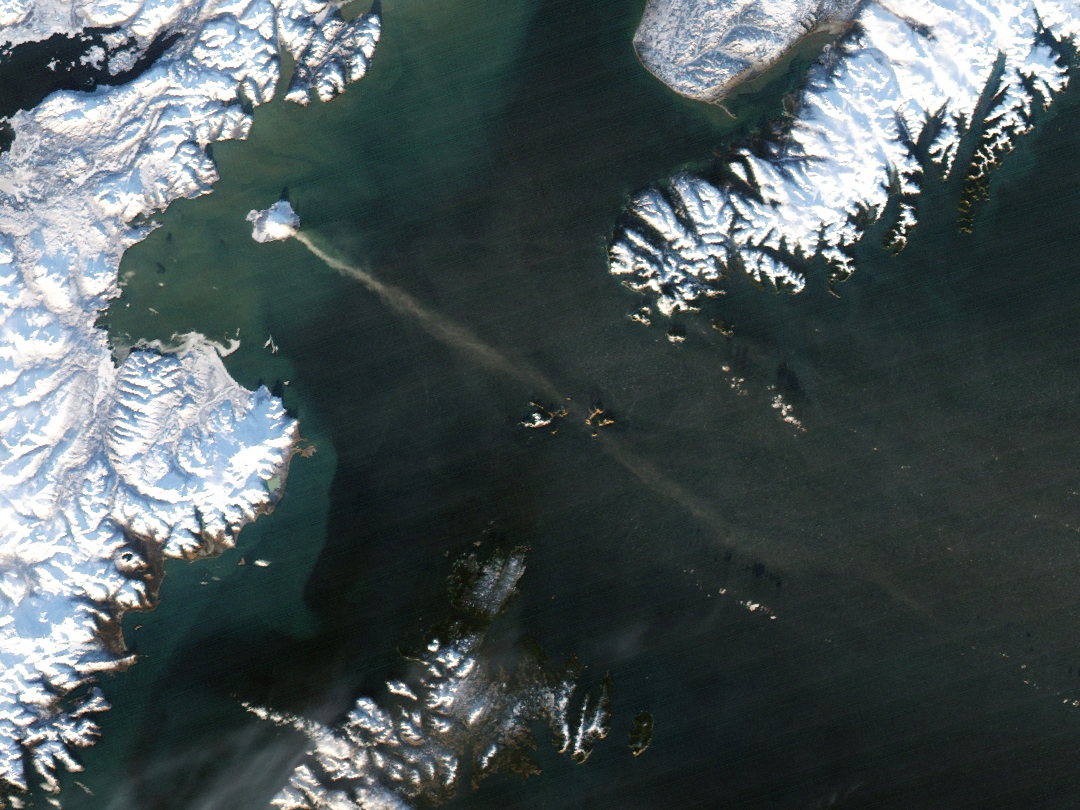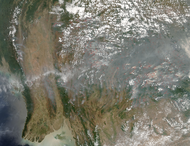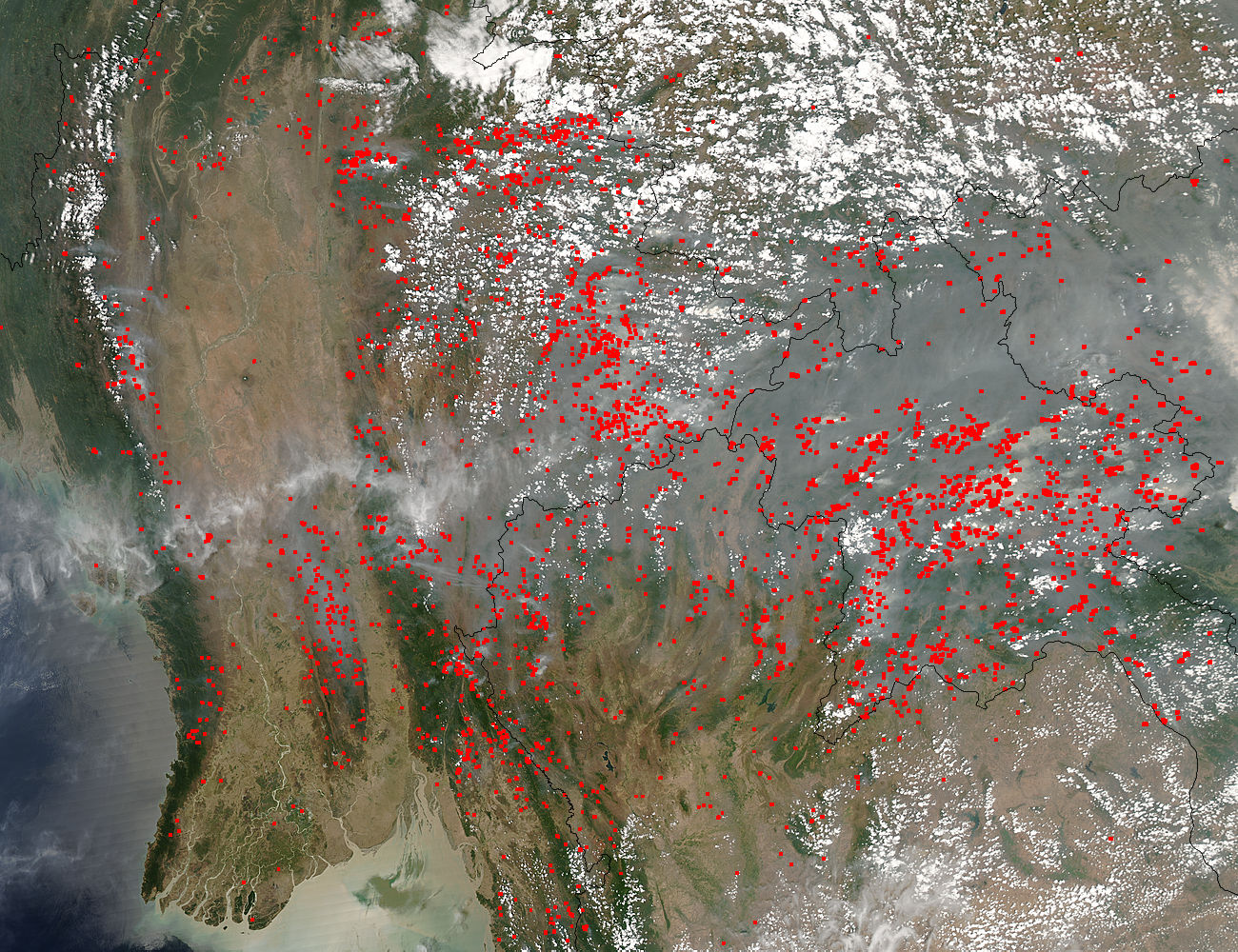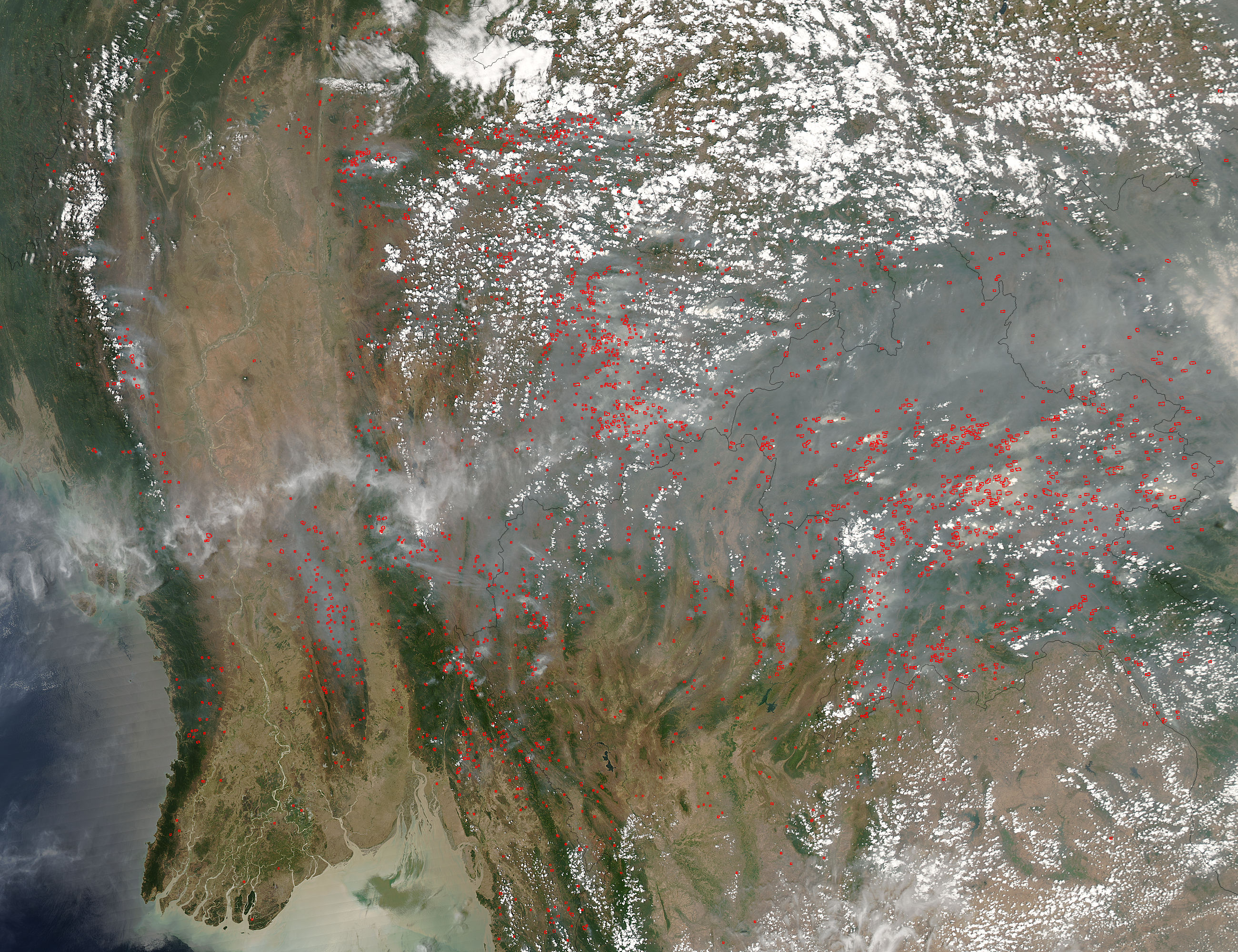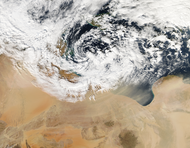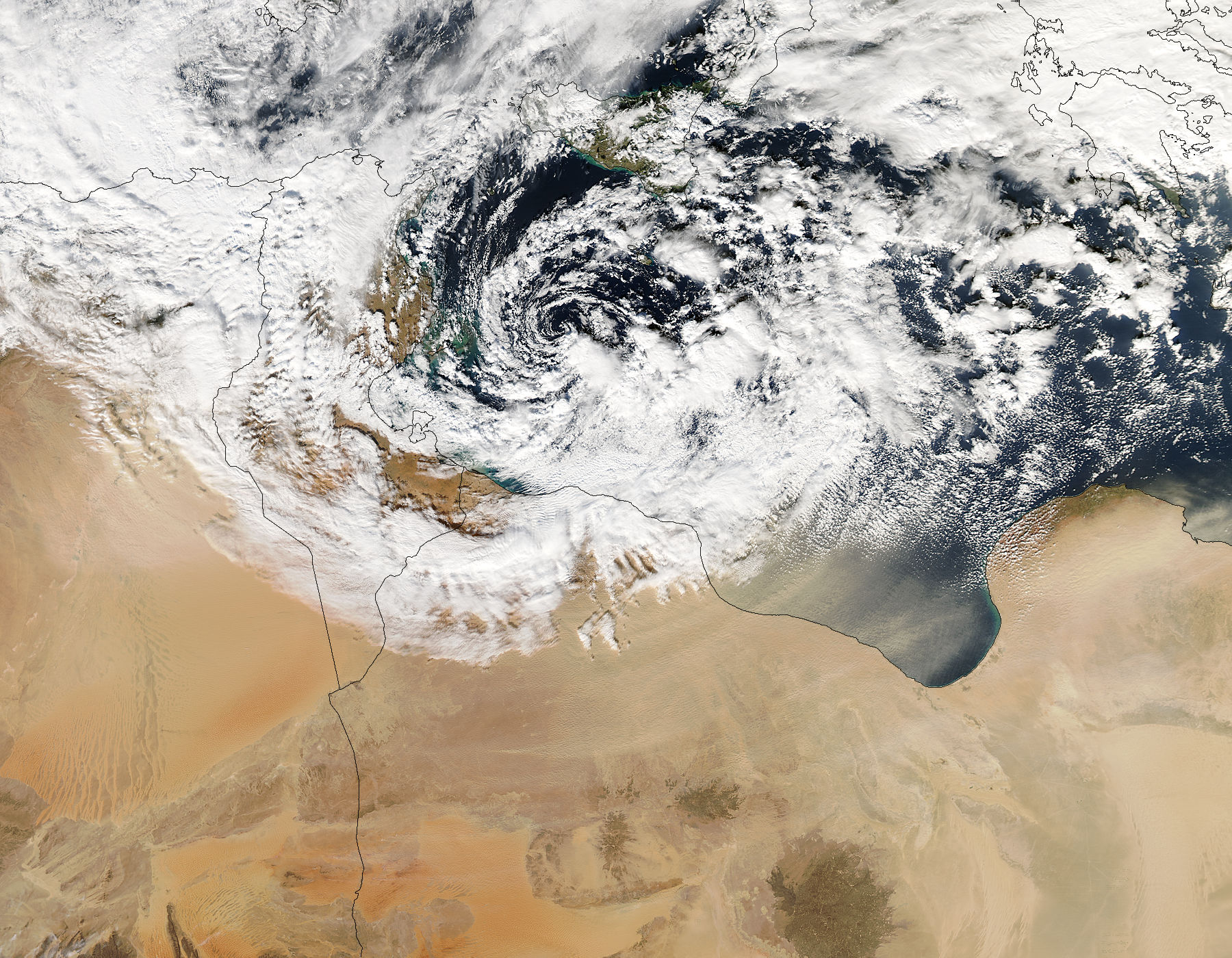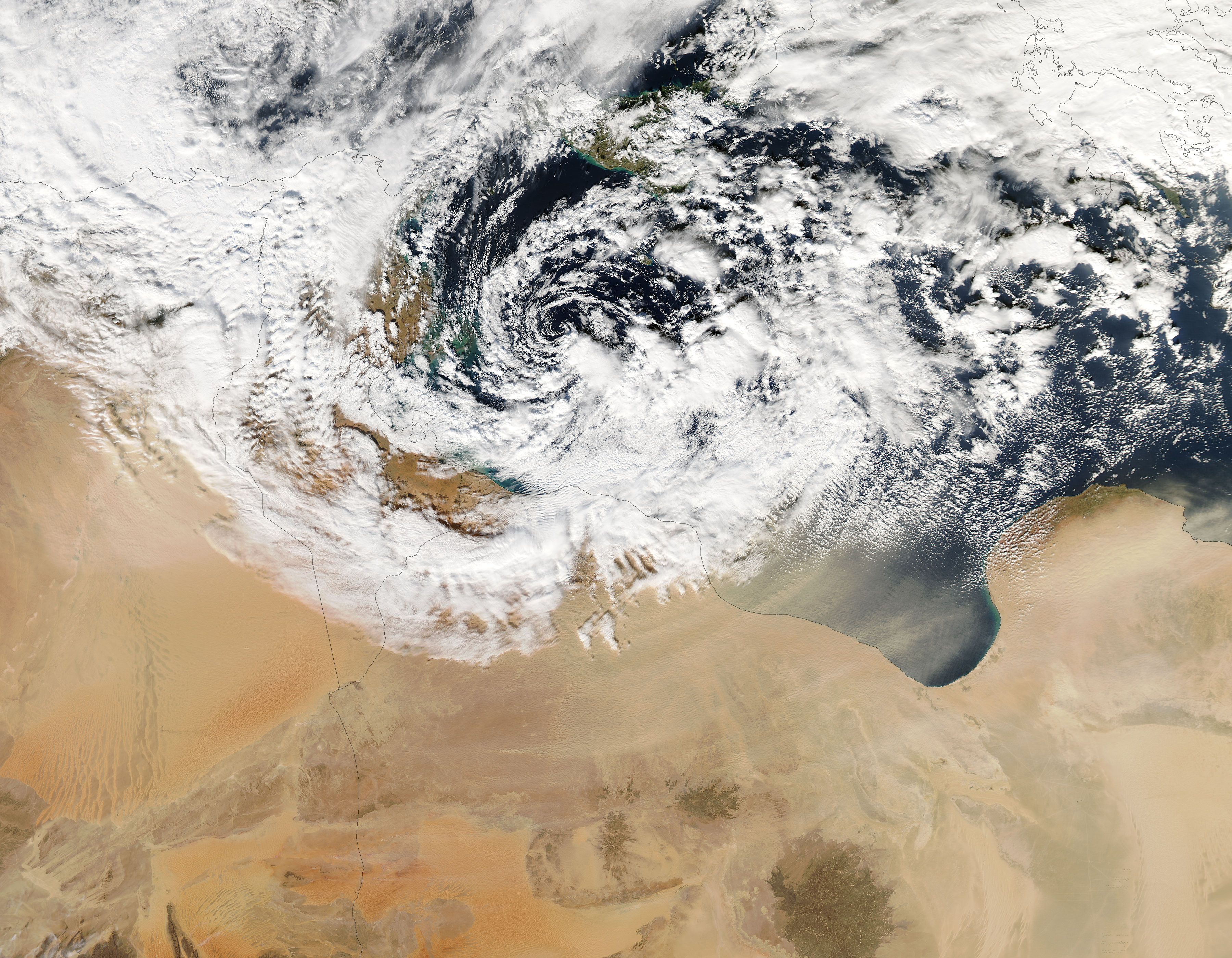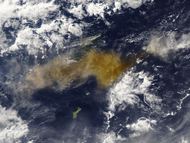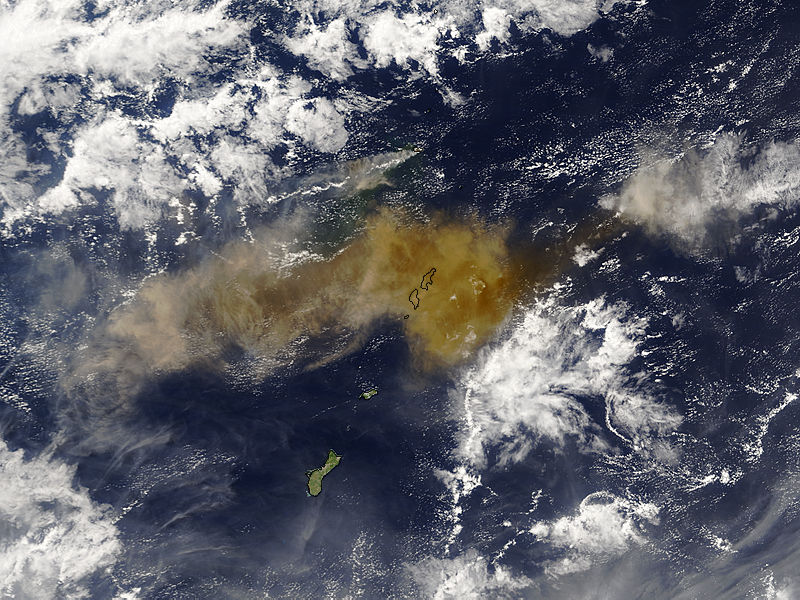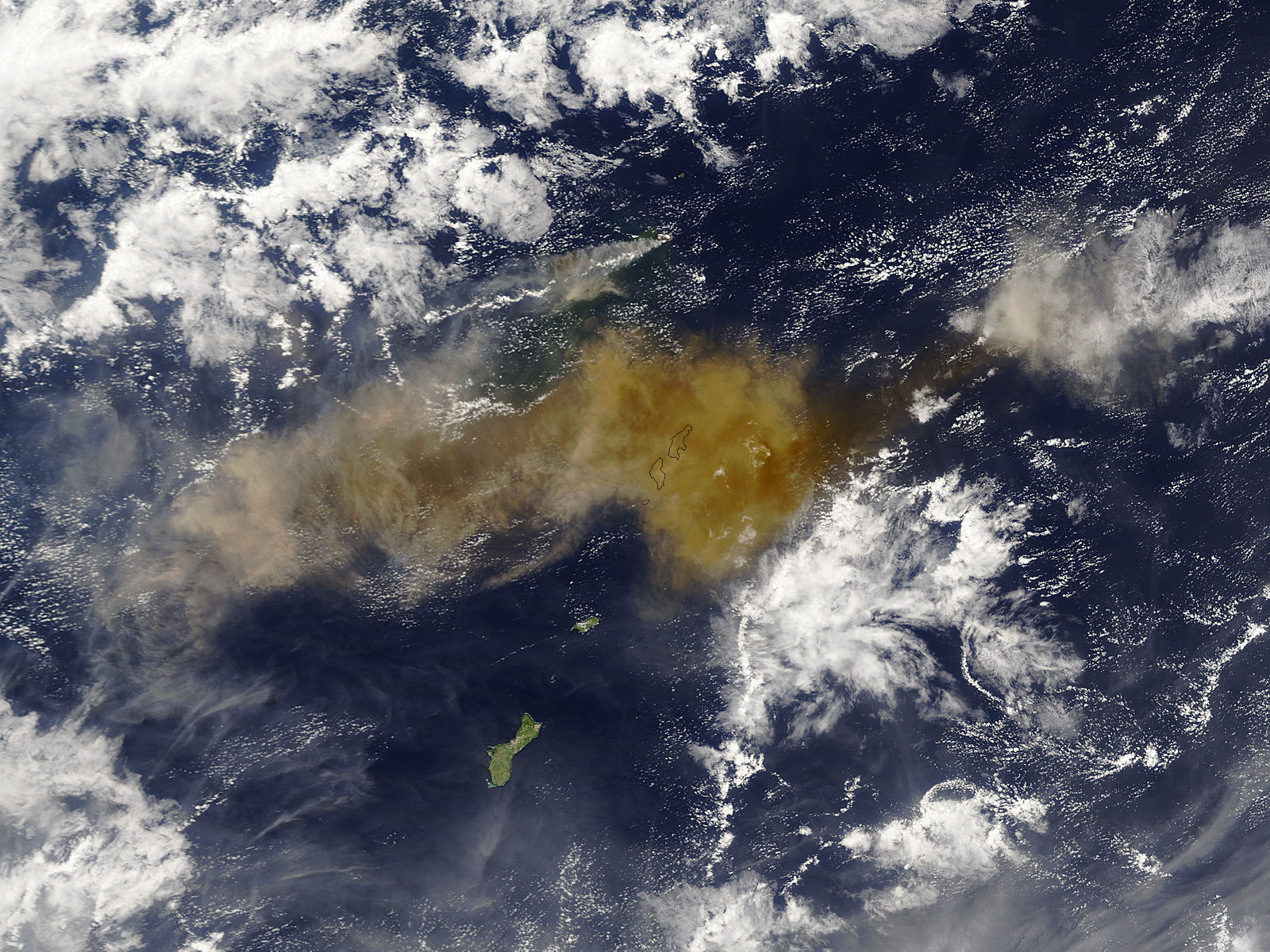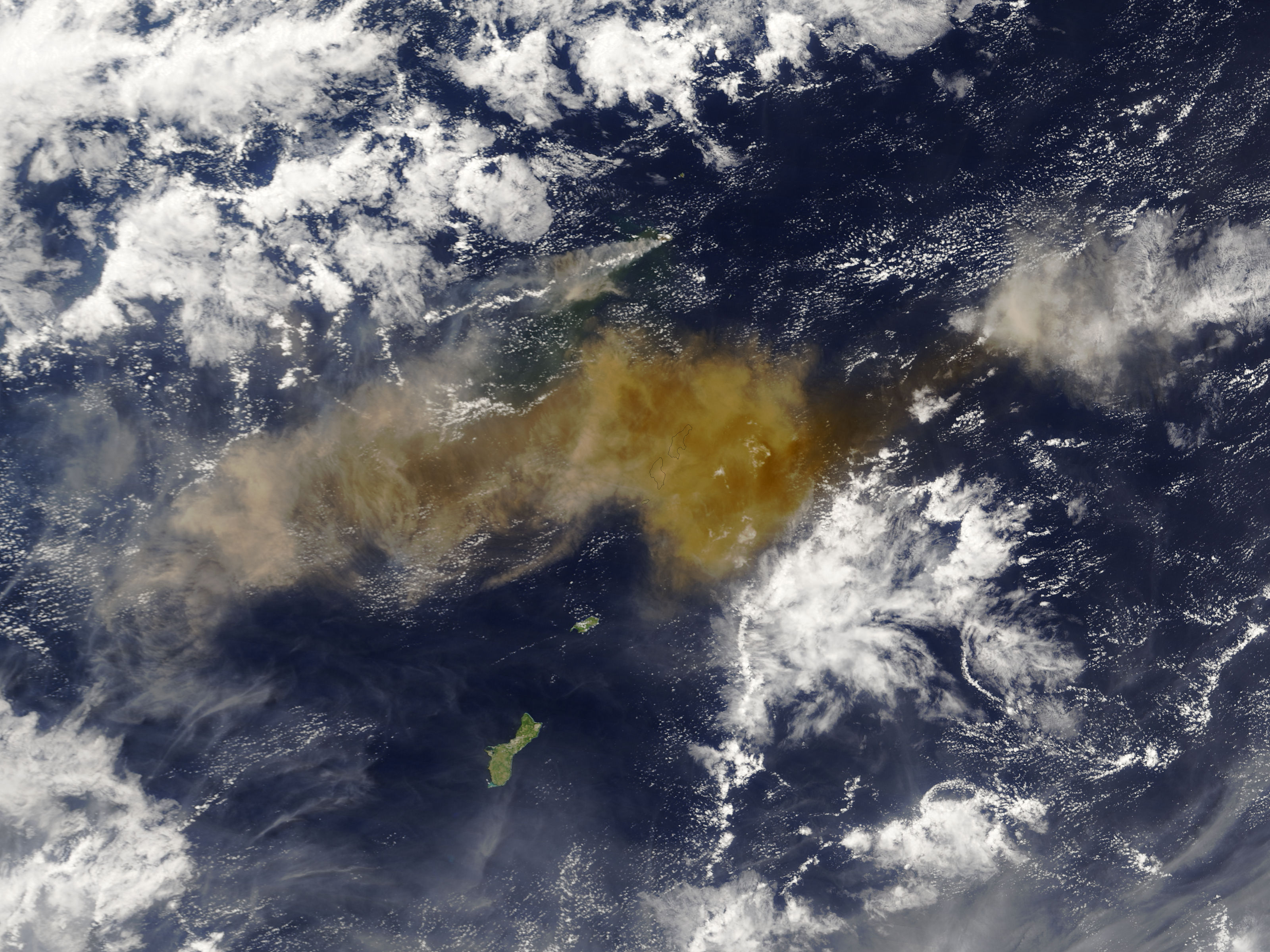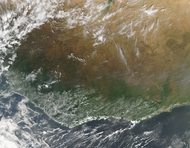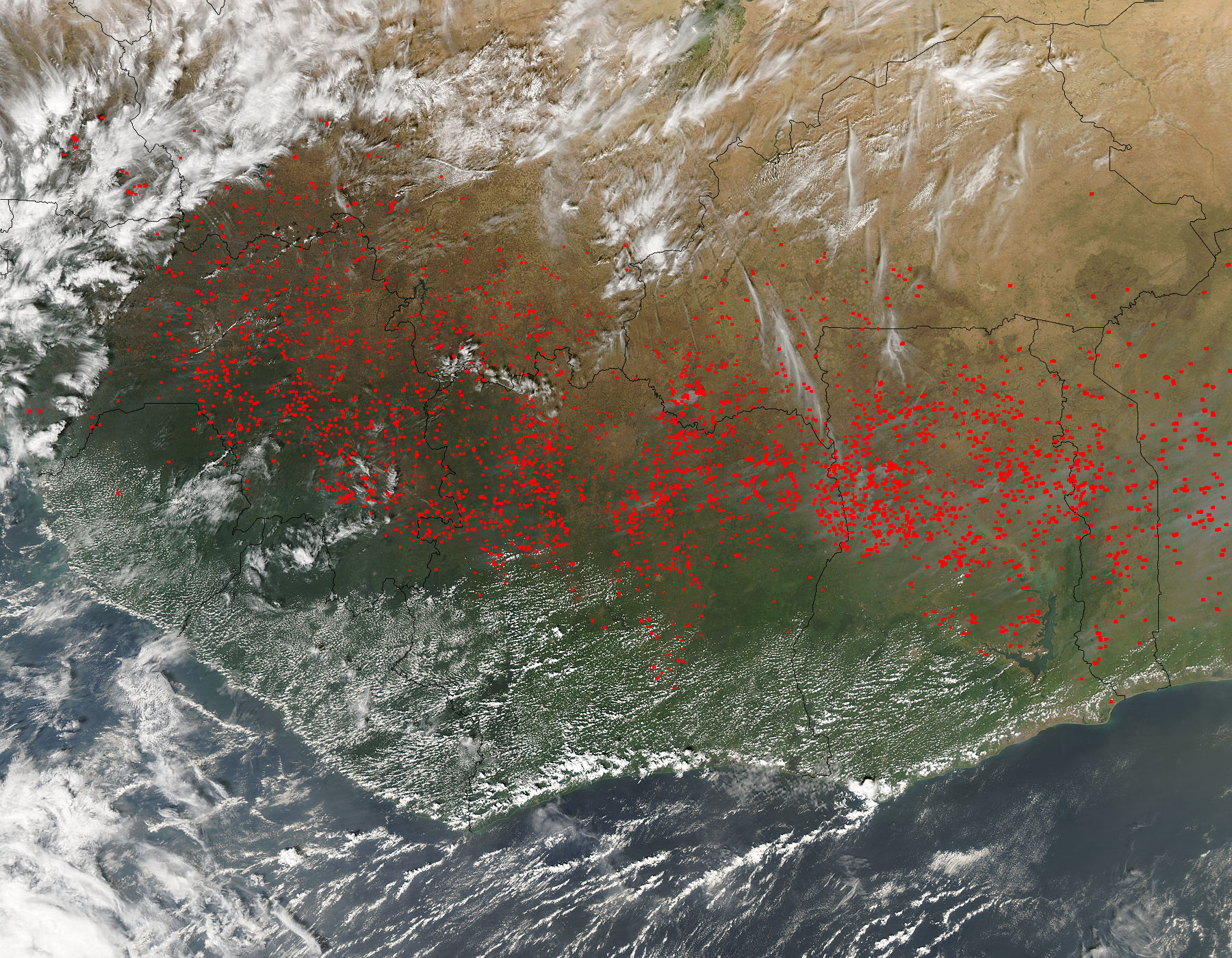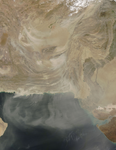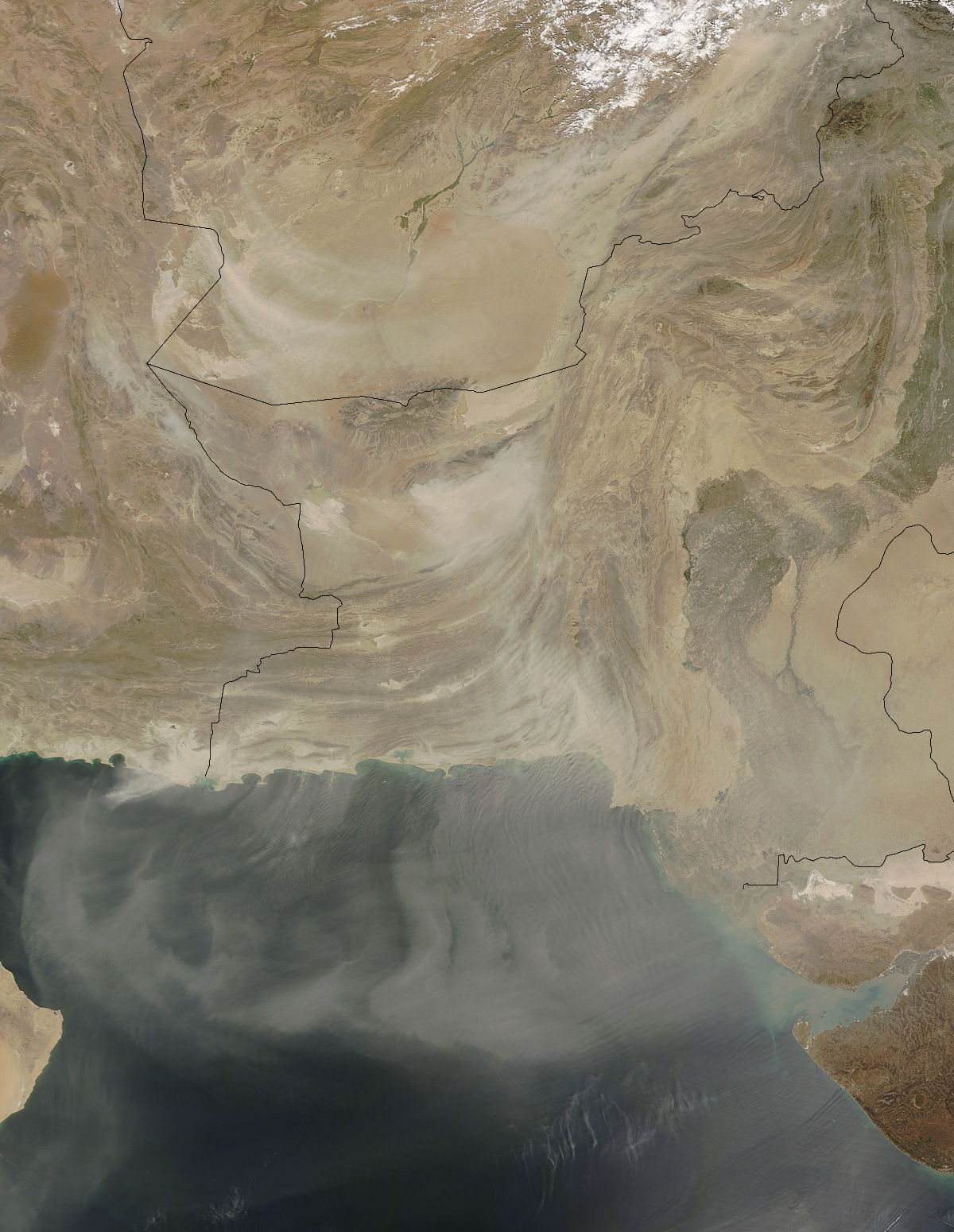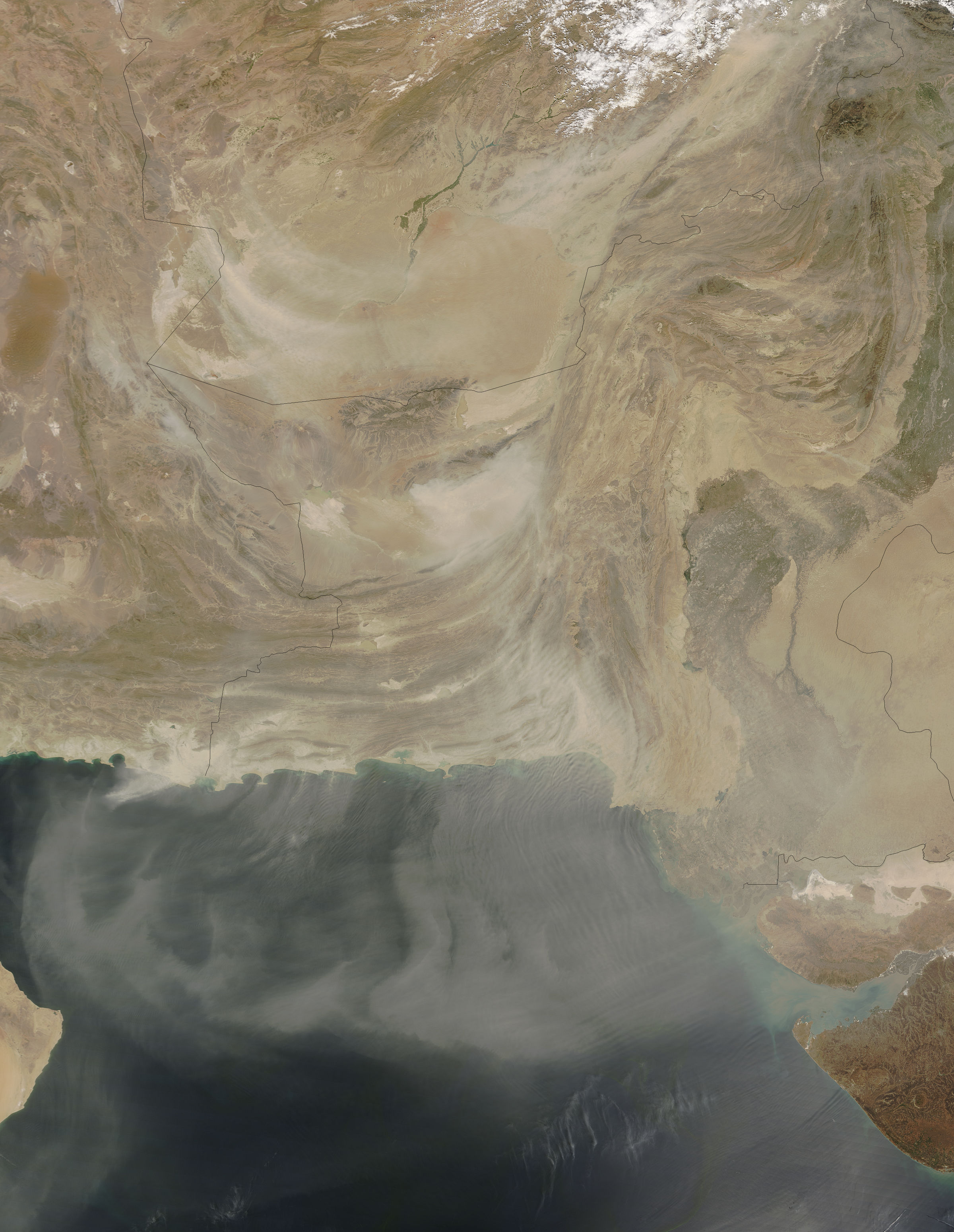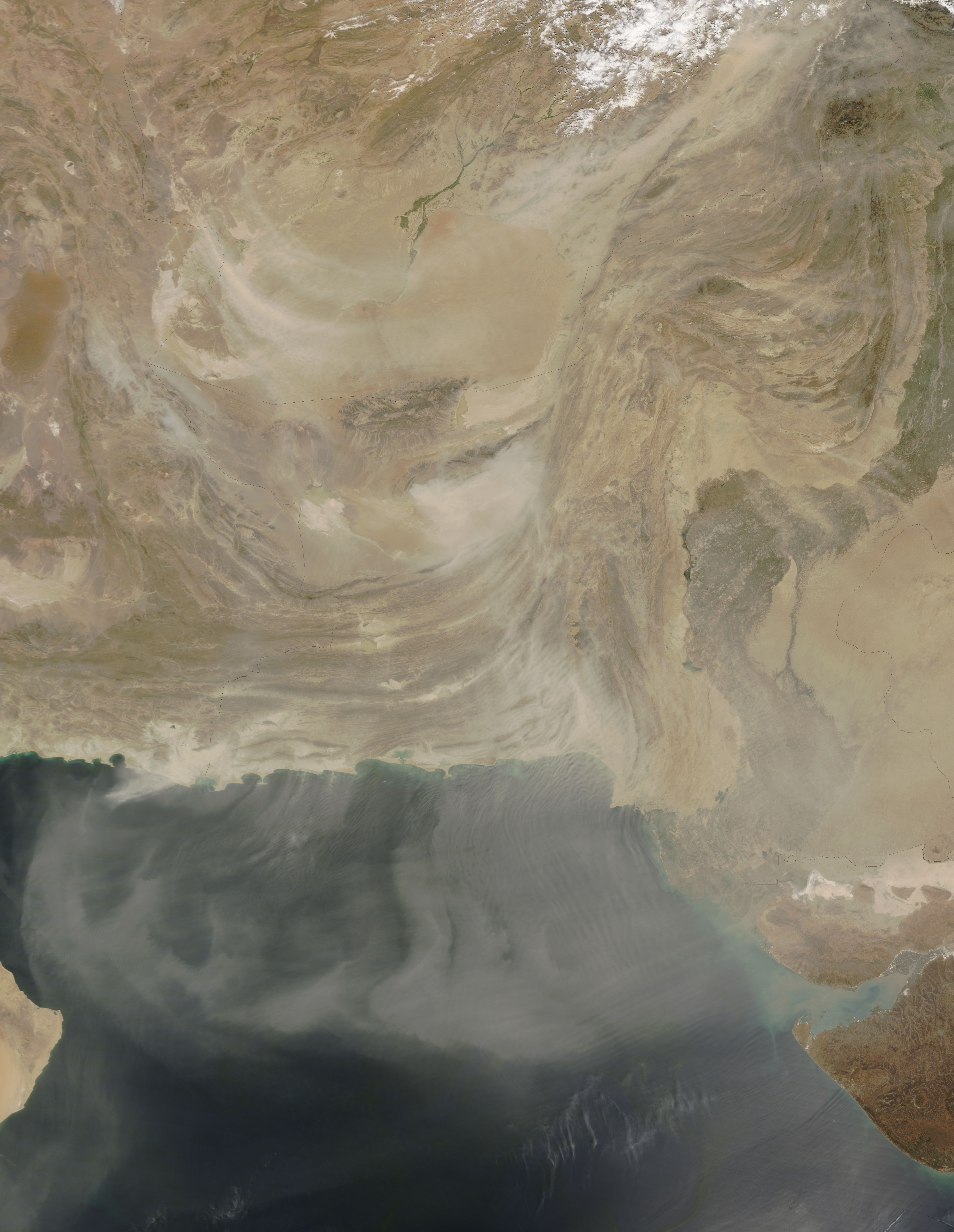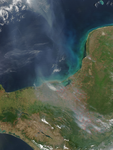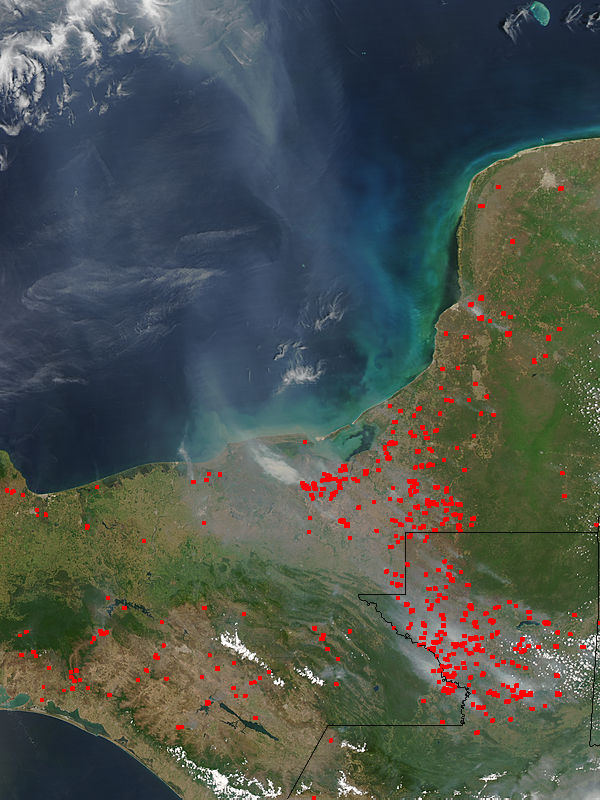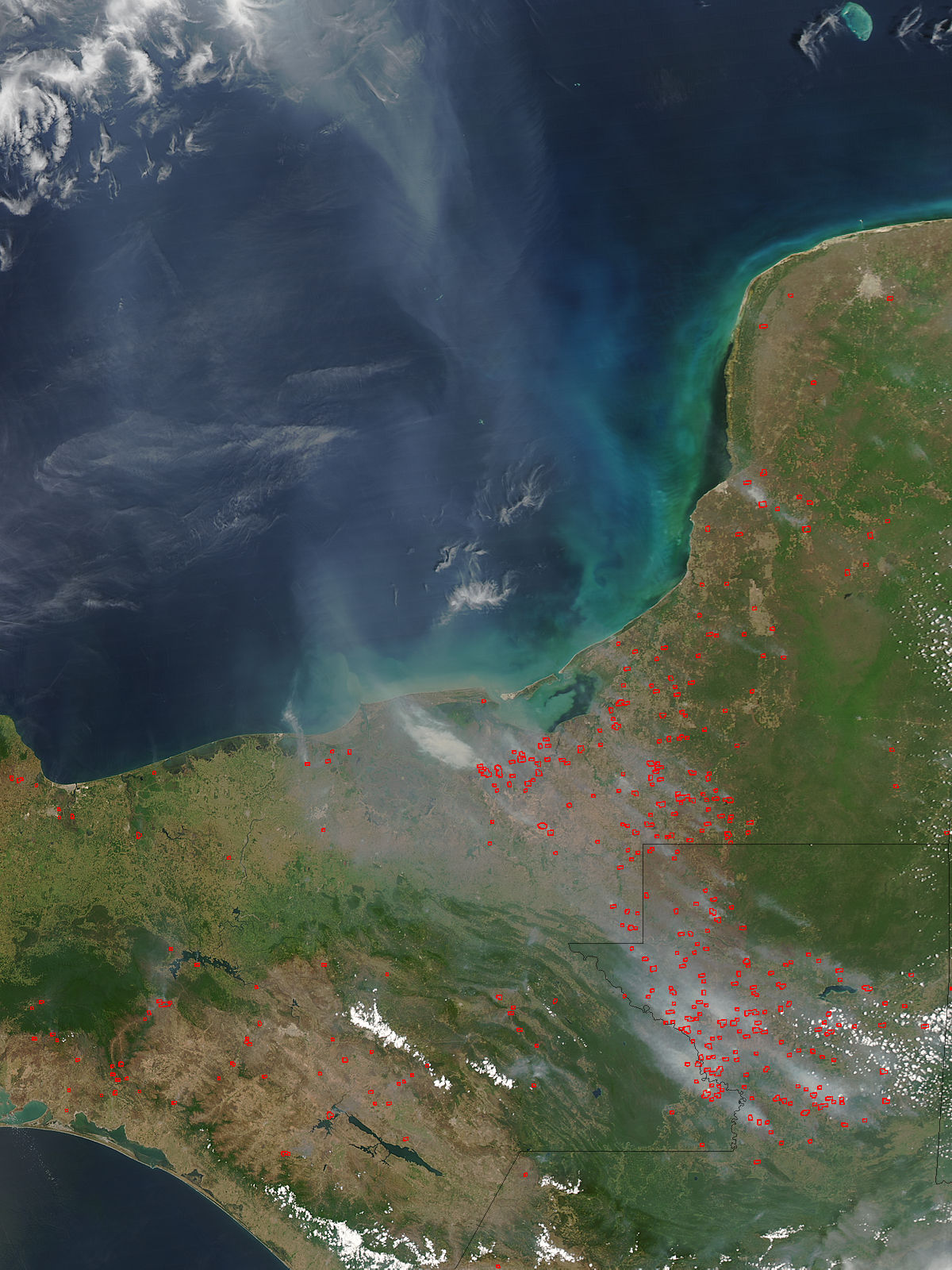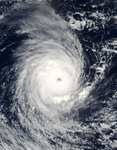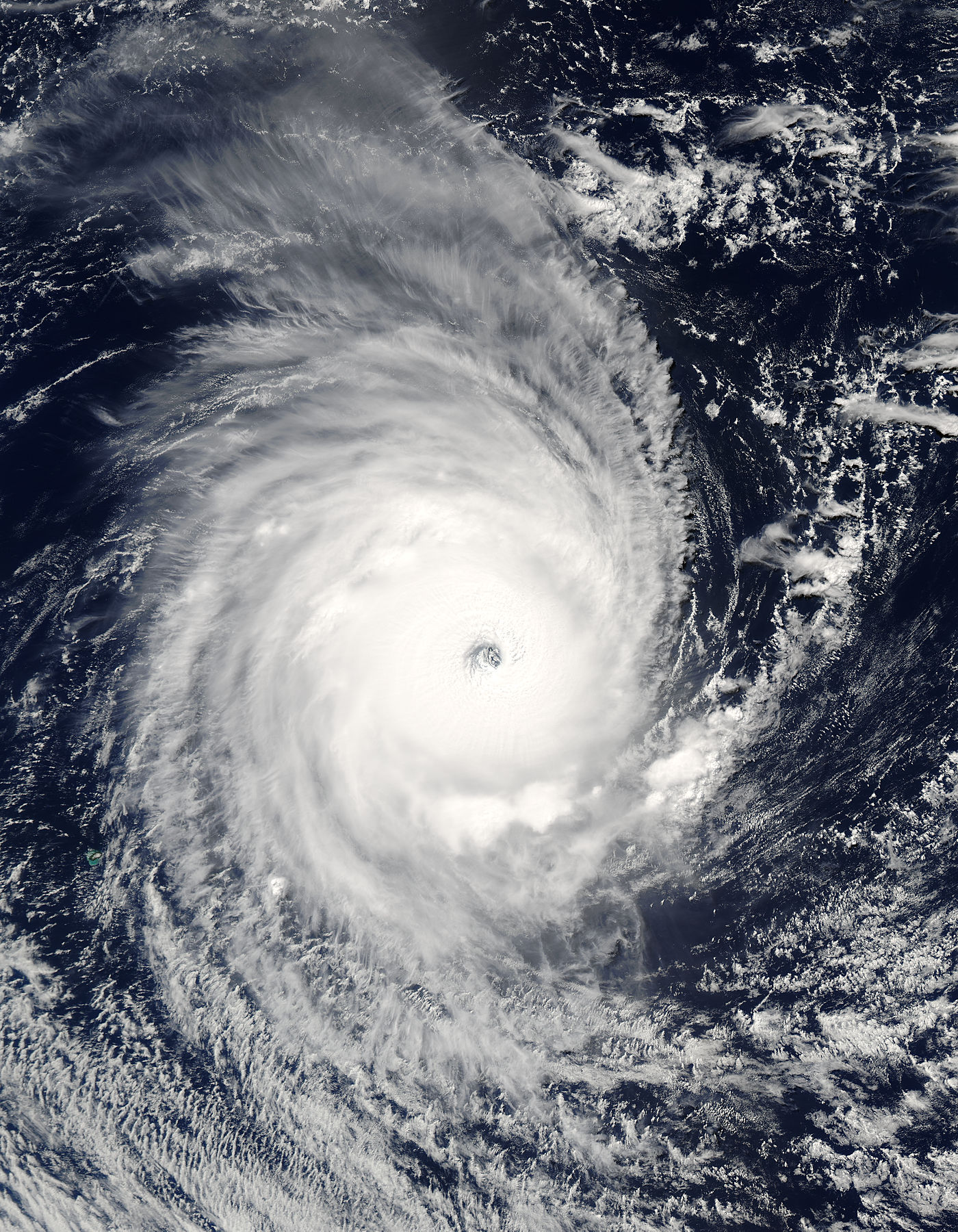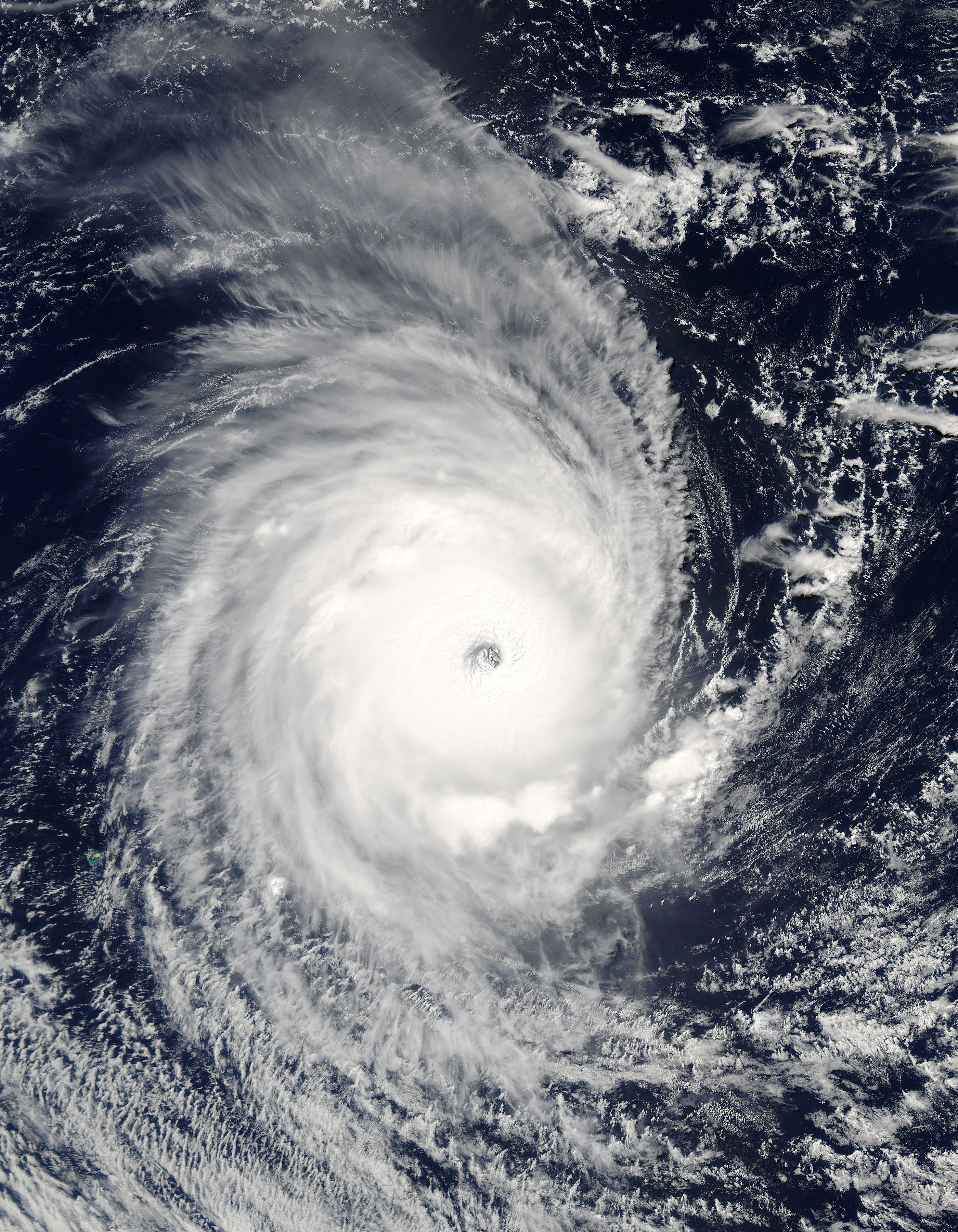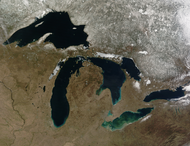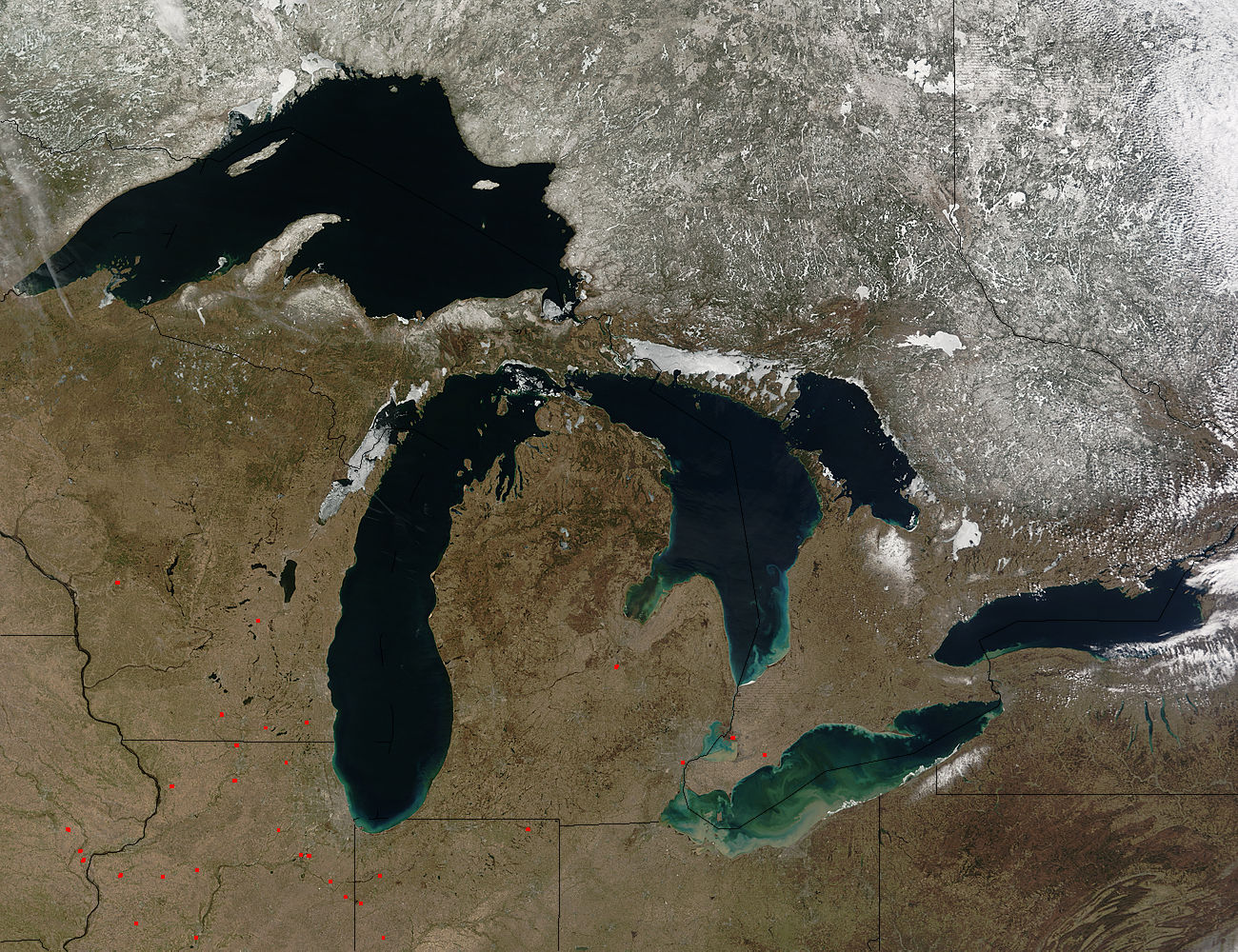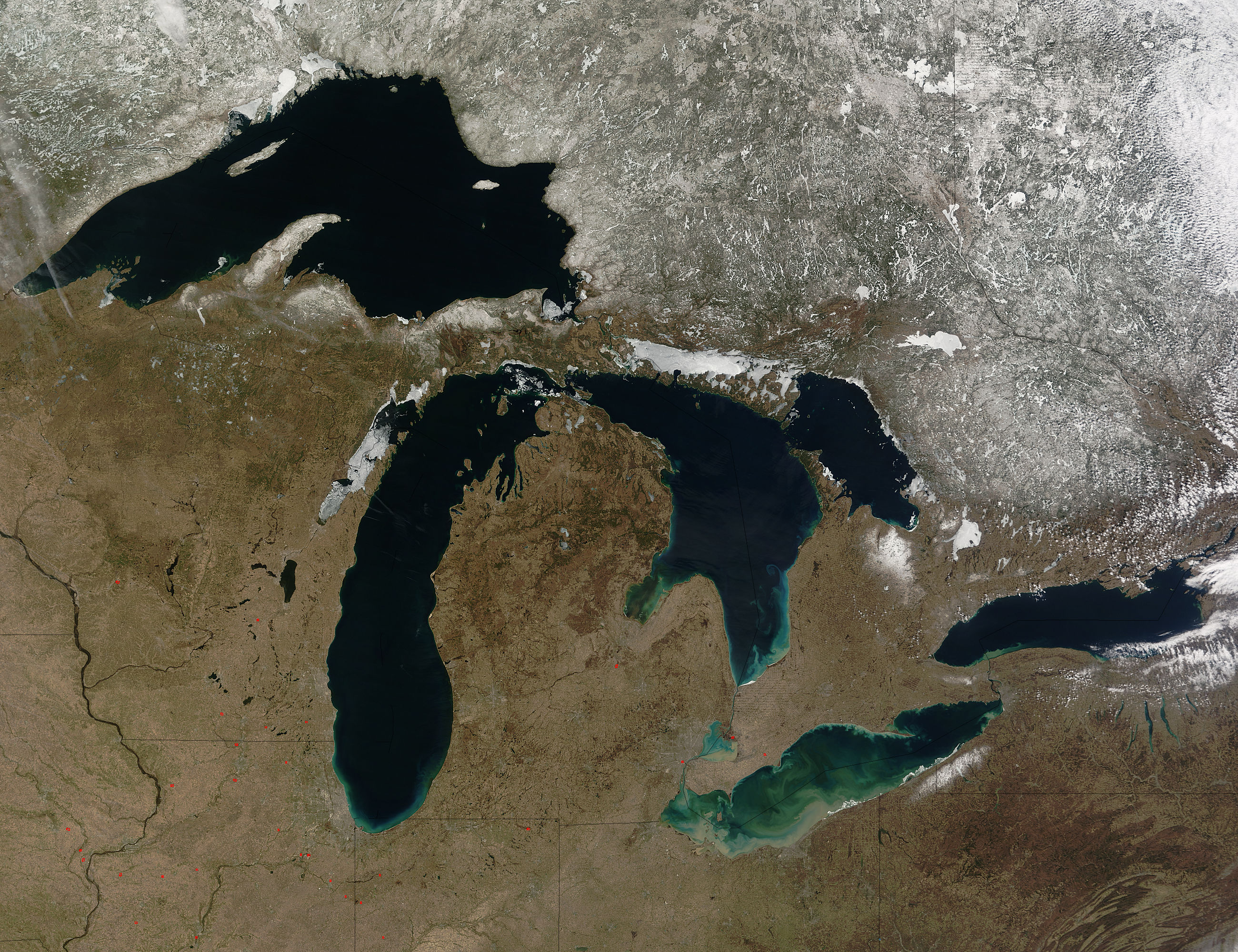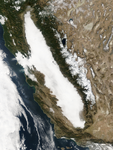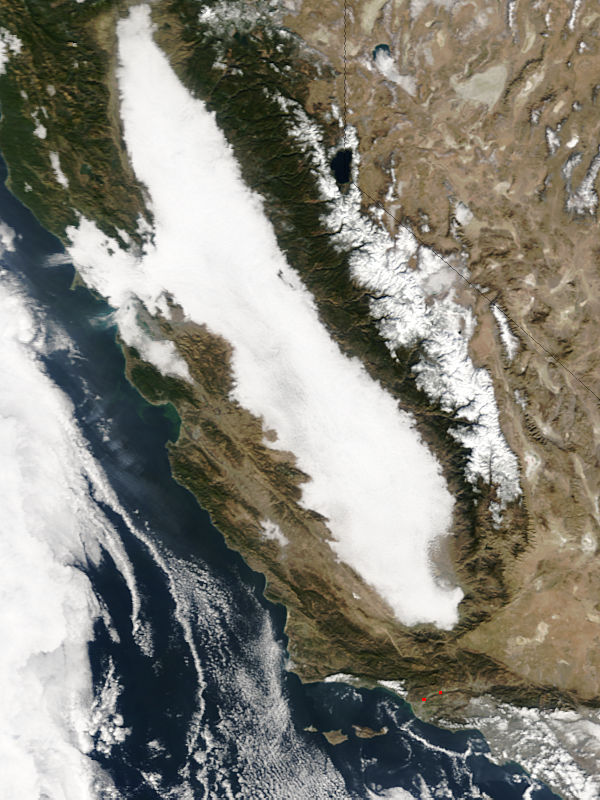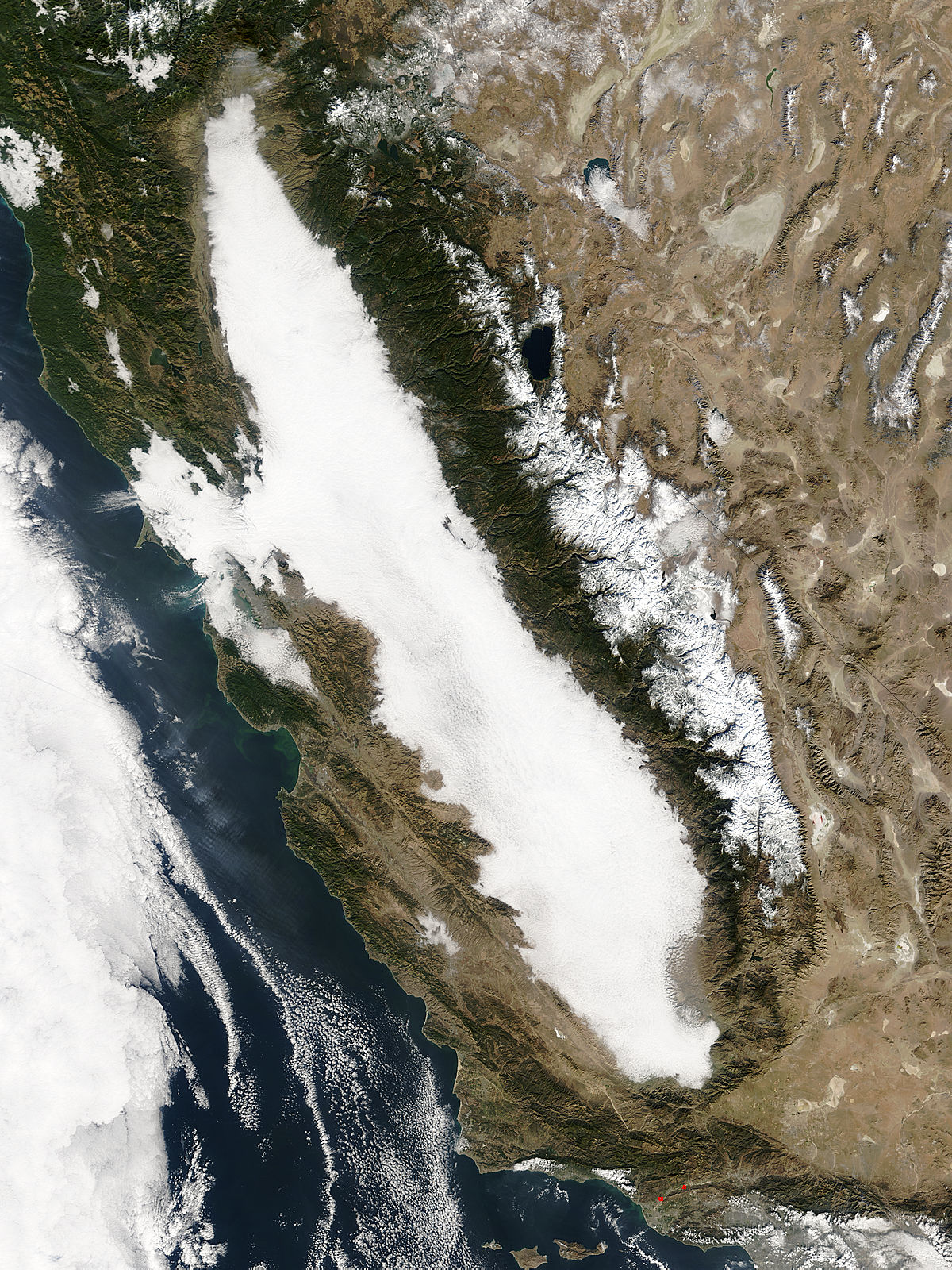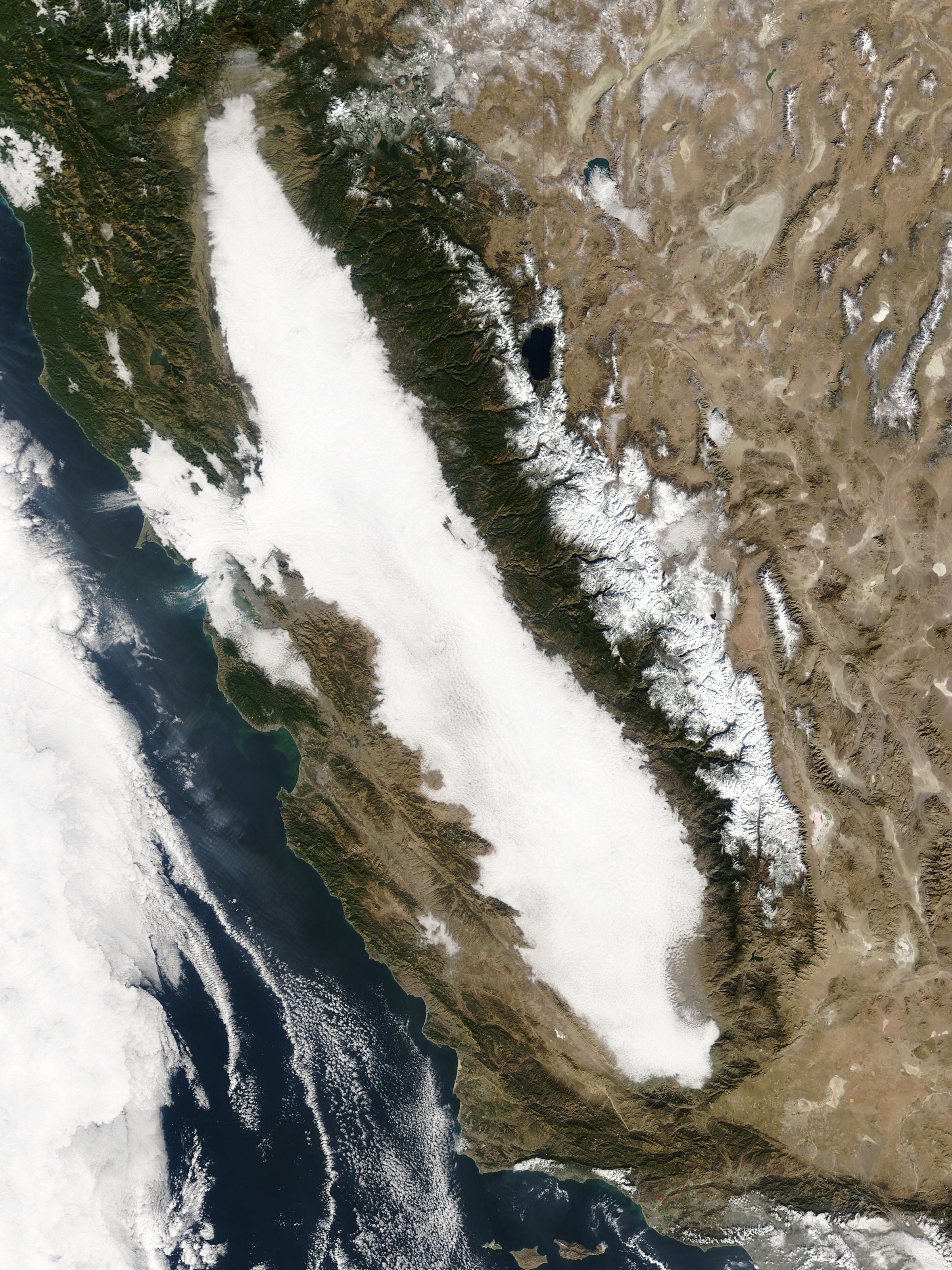Smoke and Fires in Southeast Asia
Published January 5, 2005
Scores of fires clog the sky above Bangladesh, east India, and Myanmar with thick white clouds of smoke. The green forests and plains of southeast Asia support the livelihoods of millions of the region's residents, often in the form of agricultural pursuits. One of the chief methods of ground-clearing for spring planting is fire...
Related images:
Smoke plume from fuel depot fire near London, England
Published January 5, 2005
A series of images shows a giant plume of smoke from a burning fuel depot near London, England. The first image, seen when you open this page, is a “true color” composite. If you place your mouse over the image...
Related images:
Eruption on Augustine Island, Alaska
Published January 5, 2005
Augustine Volcano in the Gulf of Alaska erupted on December 12, 2005, sending a plume of ash and steam approximately 80 kilometers (50 miles) toward the southeast. In this image, the volcanic plume streams from the tiny, snow-capped volcanic island and dissipates over the ocean. According to news reports...
Related images:
Fires across Southeast Asia
Published January 5, 2005
The dry season has taken hold in southeast Asia, as this March 30, 2005, true-color Aqua MODIS image of dense smoke and scores of fires illustrates. Fires are set throughout the day, therefore more tend to be detected in Aqua imagery, which...
Related images:
Dust storm over Libya
Published January 5, 2005
A swirling mass of air sweeps a cloud of dust into the Mediterranean Sea in this image acquired on December 14, 2005. The brown and tan colors in this image represent the sand dunes and stone plateaus of the Sahara in North Africa. The country at the left of the image is Algeria...
Related images:
Eruption of Anatahan Volcano
Published January 5, 2005
A thick cloud of ash erupts from the Anatahan Volcano in this dramatic true-color Terra MODIS image collected on April 6, 2005. According to the Washington Volcanic Ash Advisory Center, a series of low-level eruptions starting on April 4 created this plume...
Related images:
Fires in Western Africa
Published January 5, 2005
Thousands of fires (outlined in red) dot this image of the Atlantic coast of Africa. The timing and pattern of these fires indicate that these are set by humans. First, the fire season in this part of the globe begins in early November and ends in early April. Second, the individual fires are...
Related images:
Dust storm across Afghanistan and Pakistan
Published January 5, 2005
Across a wide portion of southwestern Asia, winds were whipping across deserts, sending a froth of dust into the skies on April 7, 2005. The wind raised particularly thick streamers of dust from the surfaces of the Margo Desert in southern Afghanistan and the Thar Desert...
Related images:
Fires and smoke in Mexico and Guatemala
Published January 5, 2005
A thick ribbon of smoke streams out over the Gulf of Mexico from scattered fires in southern Mexico and northern Guatemala in this image from April 10, 2005. The fires, which are marked in bright red, seem to be concentrated in an almost vertical line skirting the edge of the Yucatan Peninsula, starting...
Related images:
Tropical Cyclone Adeline-Juliet
Published January 5, 2005
Cyclone Adeline-Juliet was moving west through the Indian Ocean on April 6, 2005, when the Aqua MODIS instrument acquired this image at 04:00 UTC, near the height of the storm. At that time, Adeline-Juliet had winds of 115 knots (132 mph) with gusts to 139 knots (1 knot = 1.15 mph), and was producing ocean waves that reached up to...
Related images:
The Great Lakes
Published January 5, 2005
The Great Lakes of North America - Superior, Michigan, Huron, Ontario, and Erie - mark a dividing line between the still-snowy lands of southern Canada, and the beginning-to-bloom plains of the United State's northern midwest. This true-color Terra MODIS image, acquired on April 8, 2005, shows...
Related images:
Fog in California
Published January 5, 2005
A thick bank of fog blankets California’s Central Valley. The fog is bracketed by the Cascades to the North, the Coastal Range to the West and the Sierra Nevada Mountains to the East. These high elevation areas...
Related images:
